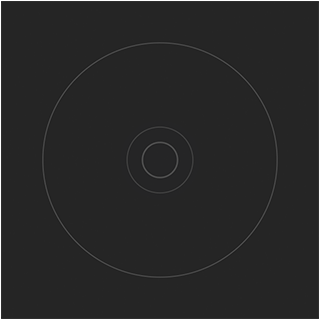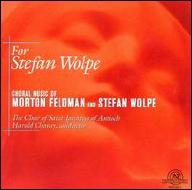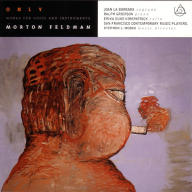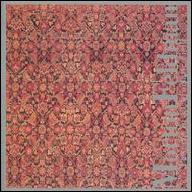Feldman's musical education included piano studies with Madame Maurina Press (the subject of his 1970 musical tribute Madame Press Died Last Week at 90) and composition with Wallingford Riegger and Stefan Wolpe. Yet it was his meeting with Cage in 1950 that set his entire future direction and musical aesthetic. Cage's circle of composers, which also included Christian Wolff and Earle Brown, combined with the influence of the visual artists that Feldman befriended, allowed him to develop his personal and instinctual method of composing. His earlier work of the 1950s utilized graphic notation in which only approximate indications were given to the performers. This eventually proved unsatisfactory to Feldman because it allowed for non-idiomatic, uncontrolled improvisation. Throughout the decade, he experimented with different versions of notation that gave varying amounts of freedom to the performers. The first experiment was to abolish rhythmic notation altogether. The pitches were specified exactly with open note heads, but all other elements were left entirely up to the performers. The second experiment involved giving an identical written part to several players with the intention of producing "a series of reverberations from an identical sound source." A work that is indicative of this reverberation technique is the Piece for 4 Pianos (1957). Feldman's third innovation of this period was a variation on the first one. Once again, note durations were left up to the performers, but in this case, all other elements were notated precisely. In his King of Denmark (1964), for solo percussion, the graphic notation is a key that assists the performer in making their own version of the piece. By 1970, using conventional notation, his distinctive doctrine of quietness, stillness, and lack of dramatic rhetoric was fully in place. Feldman's best-known chamber works of this period include The Viola in My Life (1970-1971), Rothko Chapel (1971), and Why Patterns (1978). In his last compositions, Feldman became interested in the use of time and proportion. The resulting pieces became greatly expanded in scale, with at least nine lasting more than 90 minutes. His composition For Philip Guston lasts four hours, and his String Quartet II can take up to six hours to perform. Yet even in his last works, Feldman's method is apparently intuitive, as he never admitted to, nor has any theorist been able to uncover, any systematic means of pitch selection. Feldman lived and worked in New York throughout most of his earlier creative career until 1973, when he was offered the Edgar Varèse Chair in composition at the University of New York at Buffalo, which he held until his death in 1987. ~ Steven Coburn, Rovi
Morton Feldman
from New York, NY
January 12, 1926 - September 3, 1987 (age 61)
Biography
Morton Feldman was a unique and influential American composer. His experimentation with non-traditional notation, improvisation, and timbre led to a characteristic style that emphasized isolated and usually quiet points or moments of sound. His work with John Cage and his association with the avant-garde of American painters, including Pollock, Rauschenberg, and Rothko helped him to discard traditional music aesthetics for a less ordered and more intuitive, "moment form" approach to structure.
Top Tracks
Albums
Videos
Close












